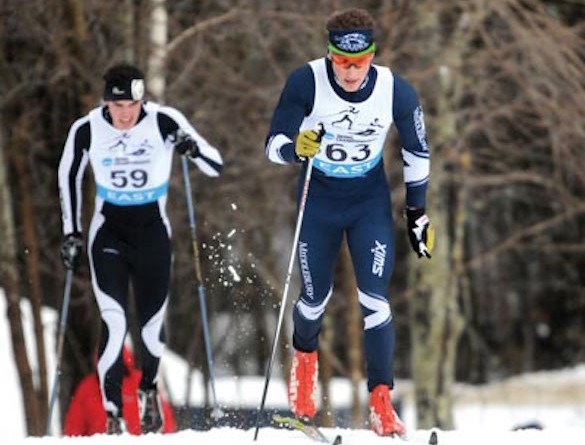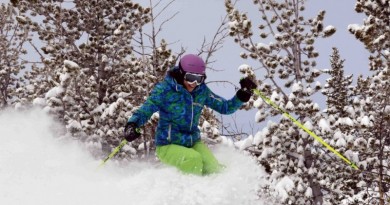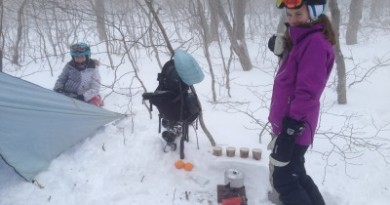West vs. East: Nordic Ski Culture
A West coast native talks about her appreciation of the Eastern nordic skiing community and why it is important to her.
By Annie Pokorny
I’m one of those lucky kids who moved around a lot as a kid.
I don’t mean “lucky” sarcastically, because from Park City, to Steamboat Springs, to the Pacific Northwest, to Sun Valley, Idaho, I got the chance to experience some of the best ski towns and cultures that the West has to offer.
What drew me to the East for college, however, was not my practiced desire to move, but the storied, historic Nordic ski culture of New England.
At Junior Nationals I had seen them — the products of that culture — skiing around in their green and blue suits, recounting tales of their days in BKL (whatever that meant). I wasn’t envious, per say, but certainly intrigued. I wanted to know this eastern Nordic ski community.
The first thing I noticed when I got to Middlebury College in Vermont was that every person within the ski community I met had at one time or another cross-country skied. Coming from a family with running and biking parents, I viewed the Eastern families as true specimens, where parents, brothers, sisters, aunts, uncles and grandparents all skied. Not every family was an Olympic family, but there were more than one that had the rings hanging from every branch of their tree.
Kids in the East all shared, at the very least it seemed, the experience of Bill Koch League, where they scooted as school children around their local ski trails, accompanied by candy carrying adults, and lifelong memories of their skinny skis. Many of these kids went on to ski in high school, either for club teams or for their school, and there were entire schools (the ski academies) dedicated to the pursuit of winter sport — a phenomenon that was just beginning to develop at home in Spokane, Wash., when I left.
There are many Eastern communities in the mountains that build their winter cultures around Nordic (and alpine) skiing, with town events and shared family traditions, night racing and Christmas tours, to the extent that few kids leave home without spending some quality time on edgeless skis.
Once we got to college, Nordic skiing espoused the kind of memories for Easterners that cross country running or soccer did in my western high school: togetherness, teamwork, fun.
The more I thought about it, the more the respective Nordic cultures in the East and West represented cross sections of their geographies and histories. Out West, where the rocky, craggy mountains rip you open and challenge you to love them, the history is equally as rugged. It’s a history where people crossed the country in wagons and horseback with dreams of striking gold but ended up testing the strength of their own individualism and based a culture around it. Today, the philosophical and physical qualities of the independent spirit are embedded in the West’s ski culture, Nordic and alpine.
The Westerners who cross-country ski also backcountry ski, and endurance run, and climb. To get involved in the sport, you make the decision on your own, and you chase it and stand by it, because otherwise it’s quite easy to drift away into the more mainstream, resort ski activities. Nearly everyone begins downhill skiing before cross-country, out West, and although great numbers of kids belong to Nordic racing clubs, referring to cross-country as “skiing” may isolate you from your edged peers. But you can own it, and when you do, skiing becomes yours.
In the East, kids grow up surrounded by Olympians, professional skiers and founders of the sport. Every town has trails, it seems, equipped with technical and beginning terrain and at least one skiing guru who loves nothing more than to get to groom them all. You have single tracks in birch woods, or wide racecourses in and out of stadiums. It’s a culture that’s so deep, so old, that it can be intimidating.
But it is also most certainly welcoming.
The two Nordic cultures of the West and East are indubitably different, but one is not better than the other. For my part, I’m grateful to have experienced both, because without one, I certainly would not have found the other.



